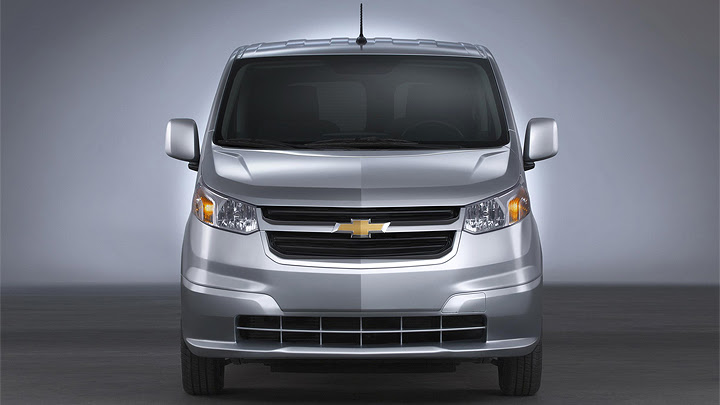
While GM went ahead of everyone with the mid-size pick-ups, by releasing the second-gen Chevrolet Colorado after the category went through a complete hiatus for some years, its new mid-size commercial van waited until the last Chicago Auto Show to appear, therefore coming after the new Transit Connect. However, Ford’s vehicle stands away from its probable biggest competitors for being the only “domestic” project among them: Chrysler is expected to create a rebadged Fiat Doblò for RAM, and GM borrowed Nissan’s ubiquitous NV200 to release as this car’s article. In other words, even though it became the official taxi in both New York and London and the very Nissan sells it in the US with its original name, Chevrolet wants to fight with what’s intended to be a small-scale version of its Express family.
Like every commercial vehicle, City Express doesn’t invest on breathtaking lines. The biggest differences from the Japanese van stay on the front, which features exclusive bumper and a very discreet variation of Chevrolet’s signature grille. Since it carries over pretty much everything else from NV200, once again it’s possible to have a practical car, whose simple shapes help to maximize the cargo space. Besides, with the exception of the cabin’s, the windows’ base line is much taller than usual. It’s interesting because it lends a touch of creativity, but doesn’t get to worsen sides and rear visibility because these windows are supposed to be covered with cargo anyway. Not to mention that glass windows are optional and available only for the 40/60 rear doors.








Speaking of which, opening those doors (or the sliding side ones) reveals 122.7 cubic feet of cargo room with vinyl-clad floor. It’s wide enough to store a 48” pallet, while the available length can reach 116” by folding the passenger’s seat. Doing so also reveals the latter’s plastic surface that can work as a table. You can make better use of City Express’ room using the twenty cargo mounting points, the six D-rings on the floor or the six other mounting points on the top, along with the additional equipments supplied by Chevrolet as specific optionals for each need. Leaving the cargo room leads to a cabin as pragmatic as what’s expected from vehicles like this. The only important difference from NV200’s cabin is the steering wheel.
Chevrolet will sell its new van in two trim levels. LS starts with 15” wheels, electrically-assisted windows, ABS brakes, stability control and a 12-volt power outlet, while LT is upgraded with cruise control, keyless remote entry, heated power side mirrors and parking sensors. The latter can receive a Technology package, composed of an information system featuring 5.8” touchscreen, Bluetooth connection, navigation system, rear-view camera, satellite radio and an USB port. The most Japanese part of this vehicle lies under the hood: City Express uses a four-cylinder, 24-valve 2.0L engine capable of 131 hp and 139 lb-ft, which is combined to front-wheel-drive and CVT transmission. There aren’t any price or mileage information yet.